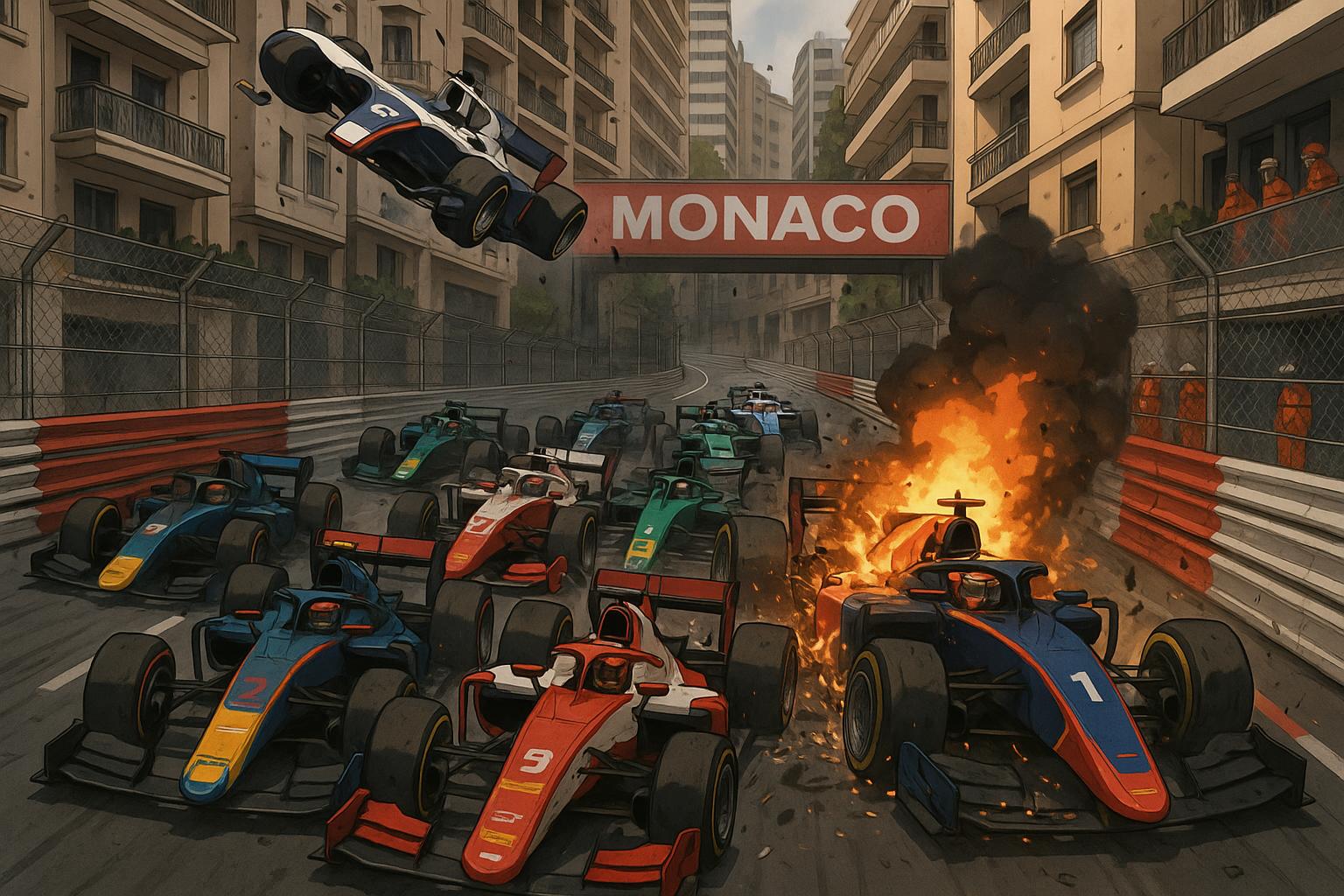A shocking sequence of events unfolded during the Formula Two feature race at Monaco over the weekend, culminating in a dramatic 12-car pile-up that raised urgent safety concerns. The chaos began at the first corner of the race, just moments after the green flag waved, when pole-sitter Alex Dunne collided with French driver Victor Martins. Both cars spun and crashed into the barriers, which set off a chain reaction among the following competitors.
The aftermath was devastating: seven drivers, including Dunne and Martins, were forced to retire from the race due to the incident, which prompted officials to wave red flags and suspend the event. Fortunately, all drivers emerged unharmed, with medical teams on standby ensuring their safety following the collision. As the dust settled, American driver Jak Crawford was leading the competition and went on to be declared the official winner when the race was abandoned due to a damaged safety barrier.
The incident stirred considerable debate about the perilous nature of racing on narrow street circuits like Monaco, where the limited run-off areas and tight corners significantly increase the potential for accidents. With a growing number of incidents on such tracks, the pressure is mounting for race organisers to evaluate current safety measures. Notably, television coverage captured a heated exchange between Martins and Dunne, with Martins blaming Dunne for the initial crash and sarcastically referencing the aggressive driving style of reigning Formula One champion Max Verstappen.
Adding to the day’s turmoil was a separate fiery crash involving Australian driver Jack Doohan, who inadvertently compounded the situation after sustaining earlier damage. His car caught fire after colliding with the wall at Massenet, forcing him to grapple with his seatbelt before successfully exiting the vehicle. Zane Maloney, avoiding disaster himself, narrowly escaped potential collision with the flaming wreckage. The rapid response of marshals in extinguishing the fire mitigated what could have become a far more severe crisis; however, the precariousness of the situation underscored the inherent dangers of racing in Monaco.
Throughout the day, conversations about driver safety permeated the atmosphere. Doohan, reflecting on his harrowing experience, admitted feeling fortunate to escape injury. He acknowledged the difficulties inherent in navigating Monaco's narrow streets and the critical importance of quick reactions in a high-speed environment.
As the dust settles on this chaotic event, scrutiny on track safety measures remains intense. Racing purists have long cherished the challenge of the Monaco circuit, but with repeated incidents casting a shadow over its allure, the motorsport community may need to reconsider the balance between exciting competition and the safety of its drivers. In the end, the question arises: how many more incidents must occur before fundamental changes are made?
The implications of the weekend's events extend beyond the immediate ramifications for the drivers involved, highlighting a broader discourse surrounding racing safety—one that is particularly urgent given the tight constraints and high speeds characterised by iconic venues like Monaco.
Source: Noah Wire Services
